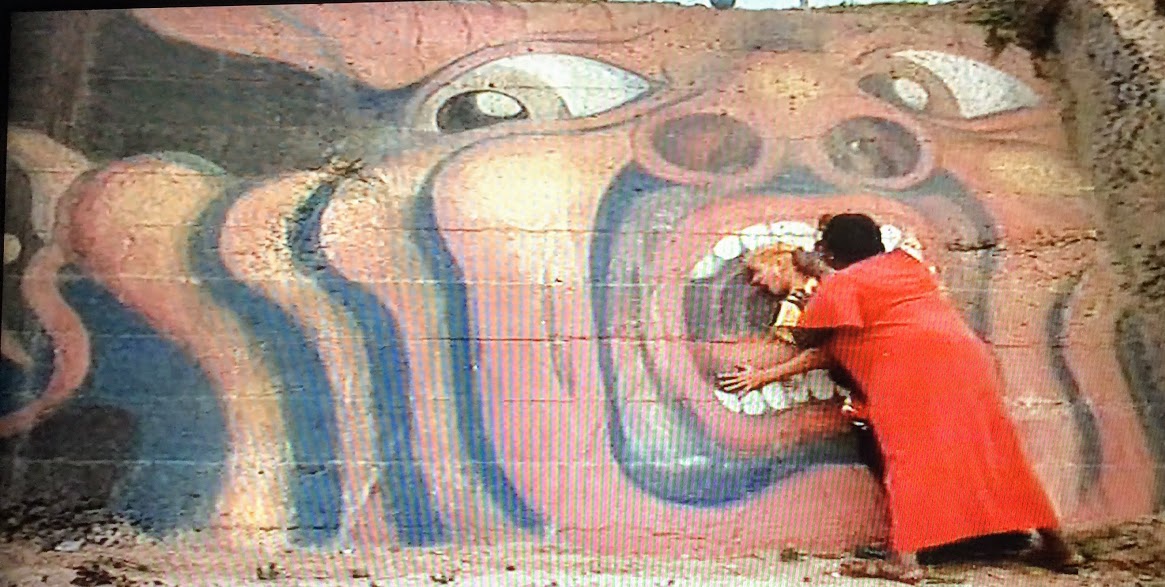
Review. Behold, my children. My magnum opus: Surf Nazis Must Die
More Videos
Published
5 years agoon
By
J.M. Brannyk“There is no way that you are ever going to convince me that this is a good movie.” – My Glorious Spouse, 2020
Here we are, at the precipice of greatness. Finally.
Let me tell you a story. A love story.
Back in the old days of chunky rental boxes of VHS tapes, I remember first seeing the glistening box in the Horror section of Movie Mania. Back in those times, children, one would hitch up their horse and cart, traveling three miles in the snow, uphill, to rent a free horror movie every Monday night. And, after the arduous trek back, would blow the dust from the VCR player and jam that precious tape in to watch a hidden relic of the past. And it was worth it. It was damn well worth it.
One of those Mondays was very special for me and was the day I watched “Surf Nazis Must Die”. I fell in love – hard. I don’t want to say it changed my life, but here I am reviewing movies and getting paid, so you tell me, pal.
When I first met Glorious Spouse as an awkward teenager, this was a movie I shared on one of our dates. When I met new friends, I shared this. When I met GS’s friends, I shared this. It was not only a beautiful piece of schlock I admired to be shared, but also a litmus test; an endurance and reactionary experiment for me to gauge them. Did they see what I saw??? Could they feel what I felt?
No. Obviously. You saw the quote and obviously it wasn’t a deal-breaker, but it became the anathema I earned, as in, “Yeah, but you also think ‘Surf Nazis’ is good (so your opinion of movies is questionable)”.
Yeah, I did think it was good.
And you know what…I friggin’ still do.
So, my friends, let me try to open your mind and bring you into the nightmarish world of loss, madness, and revenge. In honor of Black History Month and in memory of Gail Neely, who played one of my favorite protagonists in all film history, I present to you: the review and exploration of Surf Nazis Must Die.

The Plot:
In the near future, a devastating earthquakes leaves the California coastline in shambles. The beaches are controlled by gangs, one of them being surf-friendly Neo-Nazis under the regime of “Adolf”, the self-proclaimed “Führer of the new beach”. Using the calamity and chaos to his advantage, he gathers the other gangs with the message of join his order or die on the sand.
During the same tragedy of the earthquake, widower Eleanor Washington has lost her only home. Her adult son helps her into her new residence, a senior home, where she finds it difficult to adapt. She’s seen as a trouble-maker and instigator – smoking, gambling and not being complacent in her new rigid and infantilizing atmosphere.
The two stories intertwine when Mama Washington’s son is viciously murdered by Adolf and his gang. After losing the only thing in her life, Mama begins her descent into anger, madness and revenge against those who took her son’s life. Let it be known that Surf Nazis must die!!!
The Nazis:

Most of the narrative is focused on the Surf Nazis and their interactions. Even the first shot is that of a young child, punk hair and cheeks painted with swastikas, shouting back cadenced authoritarian rhetoric to a stoic “Adolf”, within a group of other young children. Some of the Nazis have original Reich monikers like Eva, Adolf’s bitch (her words, not mine), and Mengele (the Valley-speaking Q who creates surfboard switchblades and whatnot). However, others do not share in the Nazi heritage: Brutus (the sensitive fighter), Hook (Alex from A Clockwork Orange meets Captain Hook), and Smeg (oh, I’ll talk about him later).
And then we have Adolf. Who is….dramatic. Laughably and adorably so. So much drama in this one. Drama and dreams. Dreams of leading all of the gangs of the beach (kind of like the beginning of Warriors, but as a Nazi d–head).
The Nazis live on the beach and in abandoned buildings, struggling through their existence by extorting other gangs, stealing from “normal” people, and eliciting the help of the young and dumb (we’ll get to Smeg, don’t worry). They are not powerful, really. They are sad. They are taunted by the other gangs. They sustain themselves by killing and eating wild pigs (?). And just as often as they band together, they tear each other apart. They are vicious and damaged. They are fumbling in their pursuit of power, and aimless in their violence. They have no agency, engagement, or efficacy.
The Mama:

Enter our protagonist. And yes, it could be easy to point out that there are certain characteristics, maybe even certain stereotypes, that are part of the “Mama” Washington character. She is a strong Black woman – Bible-carrying but is also sassy and sharp-as-tacks. She smokes cigars and gambles with her new friends at the senior home, telling them that she’s going to bring life into “them bitches”.
I admit, there are almost Madea-esque traits, but I would say whereas the usual Older Black Female character is sometimes a cruel, shrieking portrayal with a touch of bitterness, Gail Neely plays Mama with so much heart and warmth, it’s hard not to be endeared by her performance. There are some moments of audacity, but it’s never cruel; it’s at the core of the character. There are genuine moments of tenderness and vulnerability within her strength and conviction. Gail Neely brings such life and grit to this character. She is an unconventional hero and badass. Yes, this character was written by a white male, but I believe it was done so with endearment to the character and her role as victim and avenger.

And this is evident by the juxtaposition of her core concepts and motivations from the Nazis. She is the anti-Adolf. She is older. She is woman. She is Black. She is a nurturer and mother. She has purpose. She has agency. She has engagement with those around her. And you bet your sweet toots that she has efficacy. Mama Washington has power in her own life, even when she is deemed powerless (**see chainsaw vs tree scene**). She is the very opposite of Adolf and the Nazis, and it’s utterly surprising find something so rounded and in-depth in something so…Troma, let’s say?
The 21st Century Schizoid Man
There are really good shots in here. Really. Very clever camera work, no joke. I wrote that down a few times in my most recent viewing.
However, the most memorable and recognizable shot from the film is the Schizoid Man. In this incredibly dramatic point, Mama comes in first contact with one of the Nazis as he’s describing the death of her son. She grabs him and slams his head against a graffiti-painted wall. But it’s not just graffiti:

This is actually King Crimson’s album cover for 21st Century Schizoid Man, which is also featured as a song of general chaos, war imagery, death, destruction, and the desensitization of the human spirit from those elements. It was most likely written in response to the Vietnam War.
However, in this powerful moment, the art of the album is appropriated and re-contextualized. We see the pale head of a Neo-Nazi pushed against the mouth of a Black man, silently screaming in anguish. We see the older Black hand of a victim pushing the young and naïve racist perpetrator into that scream, into that direct confrontation of his superficial ideology and his subservient actions. During which, she becomes numb to the violence (and faceless) she is subjected and now a part of.

I could probably write forever about that scene. I could write forever about most scenes that feature Mama Washington because the incredible job that Gail Neely does. Let’s everyone take the day off of work to discuss how incredible her performances are!

The Homework: Thick Brain Roll Juice
I read up some for this one. I did my homework. Originally, I actually was going to argue that they aren’t really Nazis, but counter-culture, living in a depraved environment with limited resources because they are bored, “too hip” and white.
While some of that may be true (youpieceofcrapSmeg), the homework I did proved me wrong. Terrifyingly wrong.
It’s easy to watch this film for the laughs, for the fun, for the tie dye beach gang, Adolf’s awkward line reads, the gobs of slow-mo surfing, and Gail Neely’s poetic performance.
But the fact is that it’s not just a fun vacuum of cinematography and over-the-top acting. Watching this, it’s easy to dismiss this as a campy romp. Like I said, I was originally going to talk about turf wars and lack of seething resentment because they didn’t really strike me as Nazis. Assholes, yes. Nazis, no.
In fact, the very first paragraph of An Ethnographer Looks at Neo-Nazi and Klan Groups The Racist Mind Revisited by Raphael S. Ezekiel speaks exactly to that point and to my casual dismissal,
Americans today often learn about Nazis and the Ku Klux Klan through television clips of rallies or marches by men uniformed in camouflage garb with swastika armbands or in robes. These images often carry commentary implying that the racist people are particularly dangerous because they are so different from the viewer, being consumed by irrationality. The racists and their leaders are driven by hatred…
Raphael S. Ezekiel
The same can be said for the films that we watch, Surf Nazis Must Die included. How Hollywood portrays the Nazi (Neo- or otherwise) changes over time. Our limited scope of understanding changes with those waves of popular culture, whether one is the impact of the other.
In a paper by Geoffrey Cocks entitled Hollywood Über Allies: Seeing the Nazi in American Movies, Cocks describes the road to Surf Nazis and beyond in the public cinematic sphere:
By the late 1960s, a skeptical, critical, and even cynical consciousness about the contemporary world had entered even Hollywood. Newly empowered teenage consumers and the Vietnam draft made the American film Nazi-unlike 1940s war films-big antiwar box office material because the Nazi now stood for any totalitarian oppression for young radicals outraged by American racism and the war in Vietnam. Bank of America became Bank of Amerika, and police became “fascist pigs.”
The 1970s in America brought a wave of still more problematic interest in Hitler, the Nazis, and the Holocaust, in which a mix of agnosticism, cynicism, hedonism, and nihilism prevailed over 1960s iconoclasm and idealism. The Nazi became a “floating signifier” for trivial fanaticism or madness: a “lawn Nazi,” a “feminazi,” a film demanding that Surf Nazis Must Die (Peter George, 1987)
From the 1980s on, ever more of international cinema hewed to the Flollywood-style entertainment movie. With the exception of a few films about American neo-Nazis, the Nazi and the German became less topical and central, even those about the war, and so tended to serve only the blandly realistic or the distantly metaphorical. But the Nazi yet retains his cinematic potency.
The weakness in Tarantino’s postmodern play is the weakness that had been growing and maturing in film ever since the Second World War: cinema grows so self-referential, so caught up in the economic conversation between Hollywood and American culture, that it ceases to be critically reflective.
Cocks, Geoffrey. “Hollywood Über Alles: Seeing the Nazi in American Movies.” Film & History: An Interdisciplinary Journal, vol. 45 no. 1, 2015, p. 38-53. Project MUSE muse.jhu.edu/article/589137.
So, let’s dumpster-dive into the history a little to separate fiction and fact, or maybe even find some similarities. Before the 80’s, when this movie was filmed, the KKK was the anchor for much of the white power movement and didn’t mix with the emerging Nazi party in the US. But then the 80’s came with its Flashdances, Reaganomics, and Rubicks Cubes, and the two more or less started to merge into a smelly shitstain of grossness, and “concepts/symbols started being used indiscriminately between the groups“. (Ezekiel, pg. 52)
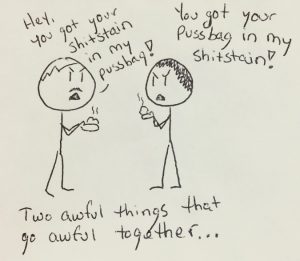
This happened partly because “some separatists feel that the old Klan is a ‘dinosaur,’ not aggressive and technical enough in its approach of asserting dominance and power. This view has led to the formation of other divisions of hate groups.” (Anderson, James F., Laronistine Dyson, and Willie Brooks Jr. “Preventing hate crime and profiling hate crime offenders.” Western Journal of Black Studies 26.3 (2002): 140) By 1994, (four years before Surf Nazi’s first DVD release) different watchdog groups estimated hard-core militant membership around 23,000 to 25,000, with approximately 150,000 sympathizers who subscribed to the ‘zines, and another 450,000 people who read the issues for the articles but didn’t buy. (Ezekiel, pg. 52-53)
During that time, between 1955 and 1998, white racists were responsible for more than a third of deaths related to domestic terrorism between, excluding the 168 individuals killed in the Oklahoma City bombing (Parkin, William S., et al. “Ideological Victimization: Homicides Perpetrated by Far-Right Extremists.” Homicide Studies, vol. 19, no. 3, Aug. 2015, pp. 211–236, doi:10.1177/1088767914529952.). And people of color are more often. Just in 1997, of the hate crimes committed, 8,049 bias-motivated criminal incidents were reported. Of these incidents, 4,710 were motivated by racial bias (Anderson).
But…but surfing! And….fun! And….switchblade surfboards! They just silly-billy Nazis!

Sure, let’s talk about the group – it’s dynamics and how it operates.
As previously mentioned, the first shot of the movie is at youth gathering with Adolf, establishing the supremacy of the Surf Nazis as the masters of the beaches. In fact, that the beach is in a bitter and bloody turf war, mostly because of the Nazis, which isn’t that surprising: “The movement makes its claim, in the ideology, to a turf and declares its role as defending that turf.” “…an ideology that glorifies toughness and fears tenderness or nurturance as weakness.” (Ezekiel) And we’ll circle back to the high tension created by them, too, so put a pin in that.
Let’s first talk about the one who pulls it all together. Even with his campy flair for the dramatic, Adolf still manages to manipulate and lead his group and terrorize the other gangs. This is well-put by Ezekiel in a few different sections:
The power to attract members comes from the leader’s certainty and his capacity with words and body to be the living expression of the resentment and anger of the listeners. Moreover, he can make his listeners feel that they are part of something that is happening, that these are not empty words.
In most cases, the leader is not extremely racist. Racism is comfortable for him, but not his passion. At core, he is a political organizer. His motive is power. Racism is his tool. He feels most alive when he senses himself influencing men, affecting them.
His disrespect includes his followers. He respects only those, friend or foe, who have power. His followers are people to be manipulated, not to be led to better self-knowledge.
We see this demonstrated in different ways, like the way he treats Eva, the way he beats Mengele, and his general indifference to the others. He is aloof, but intense, drawing on each group’s fears and insecurities…via drama!
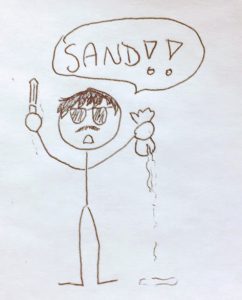
Now let’s talk about “Smeg”.
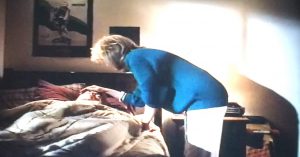
He’s also a piece of shit who comes from a loving, providing, un-apocalyptic home. His mom even tucks him in at night as he whines that he can’t go and play with Adolf and the rest. This is where you realize that civilization hasn’t crumbled. People still live in nice middle-class homes. People still go to work. People watch TV. People drink New Coke. People are existing and thriving, not living in the beach slums, eating wild (?) pigs. And to do so is by choice.
The apocalyptic backdrop is a facade as a means to an end. The disruption of the earthquake actually means very little, as any situation real or imagined, will have the message of apocalypse, as it is a means for Adolf to control and manage the group to do his bidding:
Any measure is justifiable in this war for survival. If innocent people die, it is unfortunate but a given in a war of survival. All this is heard repeatedly in leadership presentations, and its apocalyptic energy animates the larger movement gatherings.
EZEKIEL, RAPHAEL S. “An Ethnographer Looks at Neo-Nazi and Klan Groups: The Racist Mind Revisited.” American Behavioral Scientist, vol. 46, no. 1, Sept. 2002, pp. 51–71, doi:10.1177/0002764202046001005.
American Nazism’s historic preoccupation with society’s decay and racial erosion demonstrates its anticipation of the arrival of a catastrophic new millennium.
Brad Whitsel (2001) Ideological Mutation and Millennial Belief in the American Neo-Nazi Movement, Studies in Conflict & Terrorism, 24:2, 89-106, DOI: 10.1080/10576100117722
It’s not that the world is in chaos, the Nazi perceive and perpetuate the idea that the world is in chaos to justify their actions – whether its eating a wild pig (?), stealing a purse, or killing a Black man…
Let’s talk about Leroy’s Death (played by Robert Harden).
One study was particularly heartbreaking as it pieced a very tight puzzle to Leroy’s death in the movie to actual homicide victims of Neo-Nazis. Trigger warning; it’s really, really sad.
Victim–offender relationships show that 72.6% of victims had no prior knowledge of their killer(s)
99% [of racially targeted people] (or 59.2% of all victims) were killed because of something they represented, whether a specific race, religion, or even government. Here, the offender had no knowledge of the victim or their personal actions, only that they represented the population the offender was targeting.
Anti-race/ethnic minority victims were also killed more often by a knife, blunt object, or bodily weapon when compared with the anti-abortion and anti-government victims.
…almost 30% of anti-racial/ethnic minority victims were killed while walking or driving on the street.
These victims [racially motivated] had the most violent deaths. Often excessive force was used to beat them to death with blunt objects and bodily weapons. Mutilation and overkill were not uncommon.
The variance in overkill and modus operandi also could be a by product of a subculture of violence, such as those held by neo-Nazis and skinheads.
Parkin, William S., et al. “Ideological Victimization: Homicides Perpetrated by Far-Right Extremists.” Homicide Studies, vol. 19, no. 3, Aug. 2015, pp. 211–236, doi:10.1177/1088767914529952.
So….now what?
This is a very real reality that is still happening to this day, especially as the growth of hate groups and crimes have increased dramatically over the US, and even more, that they are changing. They may not be huge groups, but they are influential groups and they evolve. As two researchers put it:
Social movements in the cultic milieu are by no means stable, nor do their beliefs or organizational patterns remain constant.Rather, groups in this constellation tend to be ephemeral and are governed by a lifecycle process. Over time, these collectivities ultimately fractionate and, in doing so, give birth to new groups. The process is cyclical and facilitates the recycling of ideas (and groups). This continual process of cult birth, reformation, and death suggests that the cultic milieu is a permanent part of society, while the individual cult is a transitory phenomenon.
Brad Whitsel (2001) Ideological Mutation and Millennial Belief in the American Neo-Nazi Movement, Studies in Conflict & Terrorism, 24:2, 89-106, DOI: 10.1080/10576100117722
Low activity is not equivalent to no activity, particularly when white supremacist activity spikes in response to major social change like the election of the country’s first black president.
Cooter, A. (2011), Neo‐Nazi Nationalism. Stud Ethn Nation, 11: 365-383. doi:10.1111/j.1754-9469.2011.01126.x
As fun and campy as this movie is, it is based on fact and fantasy. Unfortunately, in real life, Mamas don’t get to but guns that “take a head off a honkey in twenty paces” and exact revenge. They exist in a culture that created the killer and perpetuates racism (whether loud or quiet) via complacency and institutionalized undertones. And do so, in our norms and conventions, silently.

And it’s easy to be complacent and to not understand the institutional affect when you’re far-removed. It’s a understandable reaction to watch this movie and not identify with any of the Nazis because they are so extreme. They cannot be us. We don’t kill people. We don’t paint swastikas on our surfboards.

But…I just want to have fun and watch my movie 🙁
Of course watch this movie and have fun! Watch the hell out of it – I love it! Remember, this is a love story. Enjoy the camp, enjoy the revenge and goofy surfing. It’s there for you to enjoy and love as your own.
But it’s also a great moment to contemplate, to take a step back and think, especially for us honkeys (we honkeys?). Some great advice for this can, of course, be found in multiple sources, but taking from Ezekiel’s final thoughts on the matter in his paper on Neo-Nazism in America:
Probably the greatest effect of White racism today is its capacity to slow institutional change. Policies that help institutional racism to continue to flourish do much more to hurt minority people than do hate crimes.
And it is worth noting that the neo-Nazis are not totally alien to White Americans. A social attitude does not exist in the mind as an isolated single entity. Real attitudes, or orientations, are laid down throughout life in layer after layer.
The task is to get acquainted with those layers of oneself—to learn to recognize them and not be frightened by them. It is not a disgrace to have absorbed some racism. It is a disgrace not to know it and to let those parts of ourselves go unchecked.
It’s easy not to have a switchblade swastika board, but it’s becomes convoluted if you defend saying the n word, or roll your eyes at #whiteoscars. Its the latter that fuels the former and is the foundation on which its built.
The Bottom-line:
Oh…you’re still here? That’s surprising.
 (5 / 5)
(5 / 5)
Don’t judge me.
When not ravaging through the wilds of Detroit with Jellybeans the Cat, J.M. Brannyk (a.k.a. Boxhuman) reviews mostly supernatural and slasher films from the 70's-90's and is dubiously HauntedMTL's Voice of Reason. Aside from writing, Brannyk dips into the podcasts, and is the composer of many of HauntedMTL's podcast themes.

You may like
3 Comments
Leave a Reply
Cancel reply
Leave a Reply
This site uses Akismet to reduce spam. Learn how your comment data is processed.
Movies n TV
Review: ‘COMPANION’ – Do not watch the trailer! (2025)
Published
23 hours agoon
February 4, 2025By
J.M. BrannykOkay, Mr. Drew Hancock, writer of Fred: the TV Show and Fred 3: Camp Fred. I hear you have a new, little horror film – COMPANION. Let’s give it a go.
And I am going to try as hard as possible not to spoil a goddamn thing since its marketing did the complete opposite.
PLOT OF COMPANION (SPOILER-FREE)
Iris (Sophie Thatcher) and boyfriend, Josh (Jack Quaid) travel to upstate New York to have a friends get-away with Josh’s best friends: Eli, (Harvey Guillén), Patrick (Lukas Gage), Kat (Megan Suri) and Kat’s boyfriend, Sergey (Rupert Friend).
However, trying to fit in, Iris starts to discover a terrifying secret within this tight-knit group of friends. A deadly secret…
THOUGHTS ON COMPANION (SPOILER-FREE)
Never would I have thought I would be saying that a writer of ‘Fred: the TV Show’ and ‘Fred 3: Camp Fred’ wrote a damn fine film. But here we are.
Writer/director, Drew Hancock, created a funny, clever and interesting gem of a horror film. COMPANION is a great adventure film in the horror genre, focusing on the ideas of identity, self-preservation, the cogito, ergo sum of life, and women’s rights.
And, trust me, I know that sounds like a lot, but that’s pulled off by the superb writing and the acting – it flows together really well. It’s an incredibly precarious job to balance humor, horror and drama. If you go too hard with humor and it’s cringey. You give too much drama and it’s tonal dissonance. If there’s too much horror…well, that’s okay, actually.
But with heavy hitters with incredible comedic timing like Harvey Guillén and Jack Quaid, the cast only elevates the writing and story. Quaid and Sophie Thatcher have so much chemistry and work so well together that the drama feels authentic and raw. Thatcher is such an engaging actress, working with what could have been a very flat role. But she portrays Iris with such intelligence, wit and vulnerability, it sells the idea of COMPANION that would usually require more suspension of disbelief.

I liked the soundtrack by Hrishikesh Hirway. Both the original soundtrack and the songs chosen work well with the tone and plot. Super fun bop. You can tell that the song selections were picked with intent and care, for example, the Goo Goo Dolls’ song playing in Josh’s apartment.
The effects in COMPANION were terrific by being used sparingly but grotesquely, for example, the scene with the slow, tortuous scene with the candle. Most of it is practical, but there are some key scenes with CGI that are really well done.
BRAINROLL JUICE: THIS HAS VAGUE SPOILERS
I love horror films. Yeah, I know, big surprise. But this type of film highlights why horror is such an important and crucial part of our history and culture. Horror is a lens of a society of the times. Looking back, we can see what creatures scared us. What people were afraid of or should be afraid of.
Horror, by large, is a very social and progressive genre. Monster movies and mad scientist movies of the 1950’s were en vogue due to the rising fears of the atomic bomb and the Cold War. The same is true for the rise in space horror as we had the Space Race and landed on the moon.
Movies of the ’60’s and ’70’s had serial killers, delinquents, social rights, and the pearl-clutching fear of losing our innocence as a nation and losing our good, Christian values.
The 70’s and 80’s saw the fear of the faceless stranger, sexual deviance, as well as our growing concern of the expanding powers of corporations.
And so on and so on (this could be an entire article itself).
However, I find this new twist on an old genre interesting – a woman’s story. From the exploitation revenge flicks of the ’70’s to the girl-power vibe of the 90’s and early 2000’s, AFAB stories are getting more attention. More realistic and substantial attention.
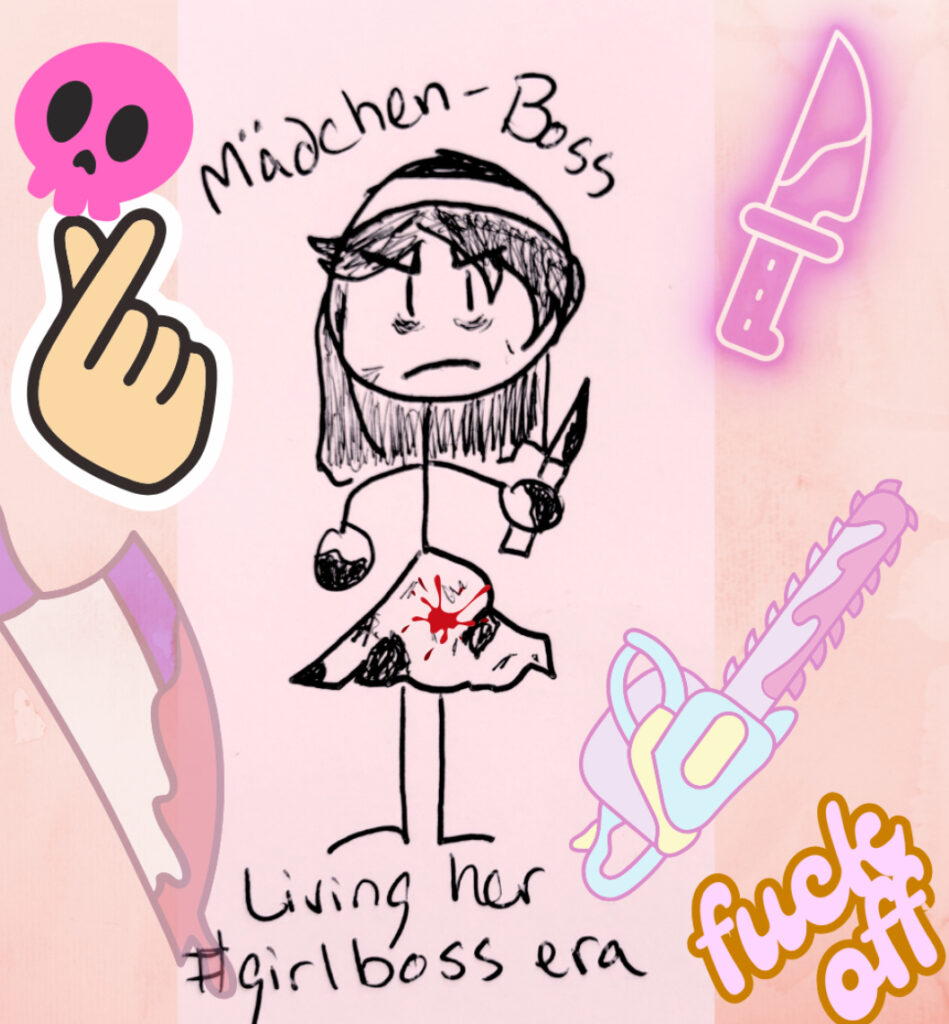
Coralie Fargeat has been exploring this with great success with her most recent film, ‘The Substance‘, but first really dove into this with her fan-favorite, ‘Revenge‘. ‘Freaky‘ and ‘Happy Death Day‘, while comedic, explore girlhood, femininity and social expectations. ‘Don’t Breathe‘ turns the trope on it’s head (in a still gross way). ‘Babadook‘ shows the difficulty with being a mother, and ‘Hereditary‘ is a deep drama on matriarchal generational trauma.
Obviously exploring themes of the AFAB horror experience isn’t a new idea, the exploitation of a woman’s story is starting to feel strained and gross. Currently, women are facing a tremendous push back on their rights. From losing the right to choose in a wild turn of events as Roe v Wade was overturned in 2022, to the most recent (at the time of this review) removal of women in the government, a senseless war on diversity and protections in the workplace, and the guttural shout of, “fuck you!” to transwomen and literally putting them in danger of starring in their very own rape-revenge true story.

What does this have to do with horror and COMPANION? Well, pretty much everything. COMPANION is about what it means to be a woman. Her fears are real and reflect the fears of our society currently. Loss of agency. Loss of identity. Loss of her voice and decisions.

But like all good horror, it will stand the test of time. It will be on the right side of history, as they say. With an incel proxy as the villain and a woman learning about herself, it’s clear what Hancock envisioned for COMPANION. It’s a film about empowerment and reflection of our society right now. And unlike the newest Black Christmas, it doesn’t shove a diva cup down your throat.
And all that from a guy who wrote Fred 3.
- Factory sealed DVD
- Jake Weary, Carlos Knight, Siobhan Fallon Hogan (Actors)
- Jonathan M Judge (Director) – Robert Zemeckis (Producer)
Last update on 2025-02-04 / Affiliate links / Images from Amazon Product Advertising API
BOTTOMLINE FOR COMPANION
A funny, terrifying and adventurous romp into what it means to be yourself.
 (5 / 5)
(5 / 5)
Movies n TV
The Formal Introduction of Evil’s “The Demon of Sex”
“The Demon of Sex” is the third episode of Evil’s season 3. The assessors investigate a new marriage that struggles with intimacy.
Published
4 days agoon
January 31, 2025“The Demon of Sex” is the third episode of Evil’s season 3, created by Michelle King and Robert King. The central cast includes Katja Herbers, Mike Colter, Aasif Mandvi, Michael Emerson, Christine Lahti, and Andrea Martin. As of this review, it’s available through Netflix and Paramount+ and its add-ons.
The assessors investigate a new marriage that struggles with intimacy. Kristen (Katja Herbers) takes control of her family. Ben (Aasif Mandvi) has an existential crisis after facing plumbing difficulties. Sheryl (Christine Lahti) struggles with the new work culture. Sister Andrea (Andrea Martin) battles a demon.
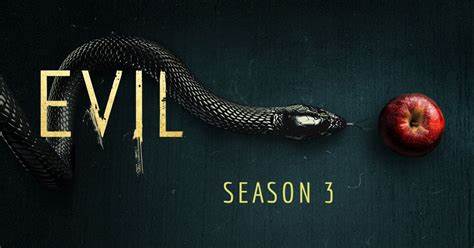
What I Like about “The Demon of Sex”
Ben usually seems underutilized as a character, especially in personal development, but season 3 works hard to rectify that issue. A skeptic’s disillusionment is an obvious choice for this type of character, but the writing and Aasif Mandvi’s performance drive the execution. It also adds another dynamic to his character referenced throughout the series, if rarely shown again, in the Science League.
“The Demon of Sex” is also a good episode for Sheryl, who struggles and triumphs in her new position. While her character trajectory teeters back and forth, “The Demon of Sex” shows what her development can look like when given the attention it deserves.
- Katja Herbers, Mike Colter, Aasif Mandvi (Actors)
- Robert King (Director)
- Audience Rating: NR (Not Rated)
- Katja Herbers, Mike Colter, Aasif Mandvi (Actors)
- Robert King (Director)
- Audience Rating: NR (Not Rated)
Last update on 2025-01-31 / Affiliate links / Images from Amazon Product Advertising API
“The Demon of Sex” also furthers the frenemy relationship between Kristen and Sister Andrea, providing ample material for both characters to explore. “The Demon of Sex” shows Kristen’s willingness to compromise and furthers Sister Andrea’s character flaws.
Leland (Michael Emerson) finally finds an attack that might work on Sister Andrea, beginning a plot thread to explore across the season. Commenting on this plot point might give credit to future episodes, but it’s a compelling example of Leland actually being devious and in control.
“The Demon of Sex” leans on Evil’s dark comedic tone, not intending to haunt the viewer but to entertain them. It dives further into the comical nature of corporate evil and marketing, showing a general shallowness in both arenas in which exploitation occurs. It’s dark, troubling, and entertaining without pulling its punches.

Tired Tropes and Triggers
In an episode titled “The Demon of Sex,” the titular demon seems to hold conflicting motives. First, it grows strong in the married couple’s abstinence, which suggests a different focus. But when acts become carnal, it’s the general kinkiness that makes the demon strong. Considering the couple talks about their troubles with a licensed therapist, it seems to evoke a general kink shame to the execution. However, the therapy also fails to resolve the underlying issues.
A slightly gory moment might unsettle some viewers, but it’s a single moment in an otherwise goreless episode.
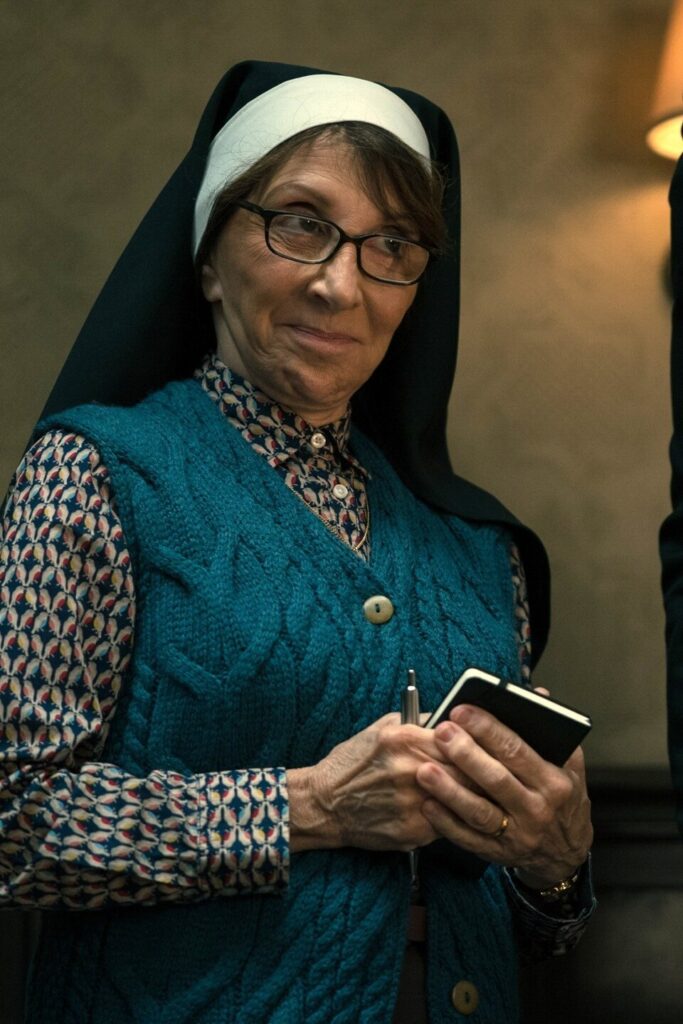
What I Dislike about “The Demon of Sex”
As mentioned in a previous review, another demon seems to indicate a more direct concept of “sex,” while the motives of this demon seem more complex. It’s a minor point, but I can’t fathom why they didn’t connect this title with the more literal succubus that’s plagued this season already. Addressing that demon also seems like a more logical entry point as the audience sees what it’s been doing.
“The Demon of Sex” sets the groundwork for future plot points. While not a fault of the episode, it blends in the background, doing what it needs to and little more. I don’t mean to pretend this is a negative, but it doesn’t haunt the viewer like past or future episodes.

Final Thoughts
“The Demon of Sex” delivers but remains buried around more memorable episodes with more lasting power. It sets up key points for several characters and allows some to shine, but it doesn’t hold iconic moments to look back on. Ultimately, it functions as intended and keeps the audience eager for future developments.
 (3 / 5)
(3 / 5)
Movies n TV
A Journey from Cosmic Horror to Shell Beach, or Dark City (1998)
Dark City (1998) is an R-rated Cosmic Horror film directed by Alex Proyas, often earning the fitting labels of tech noir.
Published
4 days agoon
January 31, 2025Dark City (1998) is a Cosmic Horror film directed by Alex Proyas, though I’ve seen labels of tech noir, which certainly fits. This R-rated film stars Rufus Sewell, Kiefer Sutherland, Jennifer Connelly, and William Hurt. As of this review, Dark City is available to Kanopy and Amazon Prime Video subscribers, with additional purchase options on other services.
John Murdoch (Rufus Sewell) wakes up in a hotel bathtub, plagued with strange memories and amnesia. Chased by strangers, he follows his memories of Emma (Jennifer Connelly), avoiding those who hunt him in his desperate attempt to understand his situation. As mysterious forces hinder him, Dr. Daniel Schreber (Kiefer Sutherland) claims to know secrets that might help. Emma Murdock (Jennifer Connelly) haunts him.
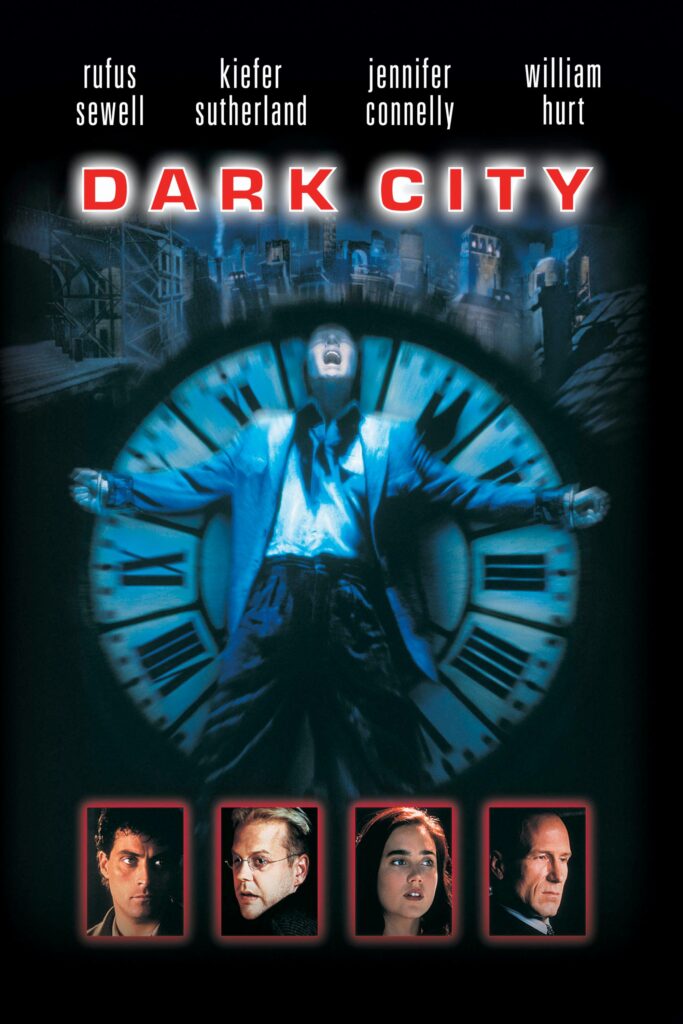
What I Like about Dark City
Dark City earned 12 awards and an additional 19 nominations. These recognitions include the 1999 Saturn Award from the Academy of Science Fiction, Fantasy & Horror Films and the 1998 Bram Stoker Award. In short, Dark City earns a strong critical reception.
Part detective tale and part cosmic horror, Dark City lures its viewer in with its aesthetic and premise. I hesitate in saying that the mystery drives the film as the beginning narration does spill most of the finer points. However, Rufus Sewell delivers a performance of someone so overwhelmed and out of his element that the terror shows despite our knowledge. This film wants the audience to know the mystery, focusing on characters learning the truth to hook them.
- Factory sealed DVD
- Rufus Sewell, William Hurt, Kiefer Sutherland (Actors)
- Alex Proyas (Director)
- Amazon Prime Video (Video on Demand)
- Rufus Sewell, William Hurt, Kiefer Sutherland (Actors)
- Alex Proyas (Director) – Alex Proyas (Writer) – Andrew Mason (Producer)
Last update on 2025-01-31 / Affiliate links / Images from Amazon Product Advertising API
Every performance nails its particular niche. From Kiefer Sutherland’s Dr. Schreber’s untrustworthy scientist to Jennifer Connelly’s mysterious Emma, each performance enriches the plot. This praise belongs to the entire cast, as many performances hold nuances that make sense after learning the entire truth.
Dark City maintains tension for most of its runtime, with the ending being an exception. That isn’t to say that the film fails to create a haunting story, but the focus shifts as the characters learn more about their situation. While both parts of the film accomplish their objectives, it does minimize the horror.

Tired Tropes and Triggers
At the backdrop of this story, there’s a serial killer murdering sex workers. It’s a familiar plotline, and Dark City doesn’t push against its familiarity in most aspects. However, the reasons behind this plot are somewhat more complex beyond simple shock value.
There was one notable voyeuristic nude scene, but the first naked body is Rufus Sewell’s John. Besides these moments, Dark City doesn’t lend itself to voyeurism. Instead, it prefers a largely sexless and detached perspective, which seems common among Lovecraftian-inspired properties.
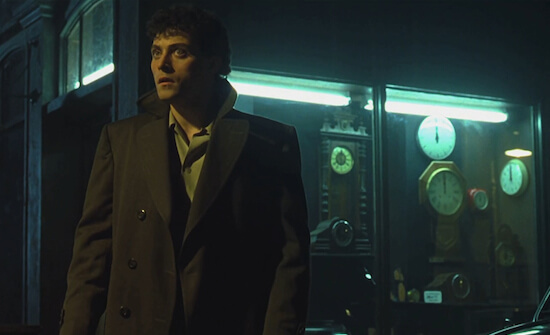
What I Dislike about Dark City
As briefly mentioned, Dark City doesn’t deliver a traditional mystery because the beginning narration spoils most of that mystery. While this doesn’t inherently hinder the film, it’s a decision that doesn’t seem to make much sense. Most of the narration gets shown or told to the audience later. It’s as if the audience isn’t trusted to understand these elements. However, this film repeats this information or shows it with better execution, making the narration unnecessary.
Without divulging too much, the ending empowers a particular character that hinders the cosmic horror influences. It’s hard to believe the danger of cosmic forces when they prove to be your equal.
While not a fault of Dark City, The Matrix would focus more on empowering its main character through realizing some truth. Since The Matrix came out a year after this film, Dark City holds a stronger claim to the trend. However, the execution of this plot point goes to The Matrix. Despite the drastically different focus and genres, I can’t help but wonder how much The Matrix’s success has overshadowed this film’s lasting power.

Final Thoughts
Dark City creates a tense journey for audiences to follow, combining cosmic horror and tech noir to create something unique. It’s a cult classic that earned an award after its digital re-release because few films provide its unique mix of genres. If you crave a dark mystery where humanity must adapt to overcome the impossible with a flare of cosmic horror, this film might satisfy your craving.
 (4 / 5)
(4 / 5)
Trending
-
Book Reviews6 days ago
Let’s Do Lunch Review – A Witchy, Whimsical Recipe for Chaos
-
Movies n TV6 days ago
Perfect Reboot of The Franchise: Halloween H20 (1997) Review
-
Movies n TV5 days ago
When Your Mother Dates Creature Features, or What Lies Below
-
Original Creations5 days ago
Arctic Horror – A Chilling Tale of Survival and Terror by Nicole L. Duffeck




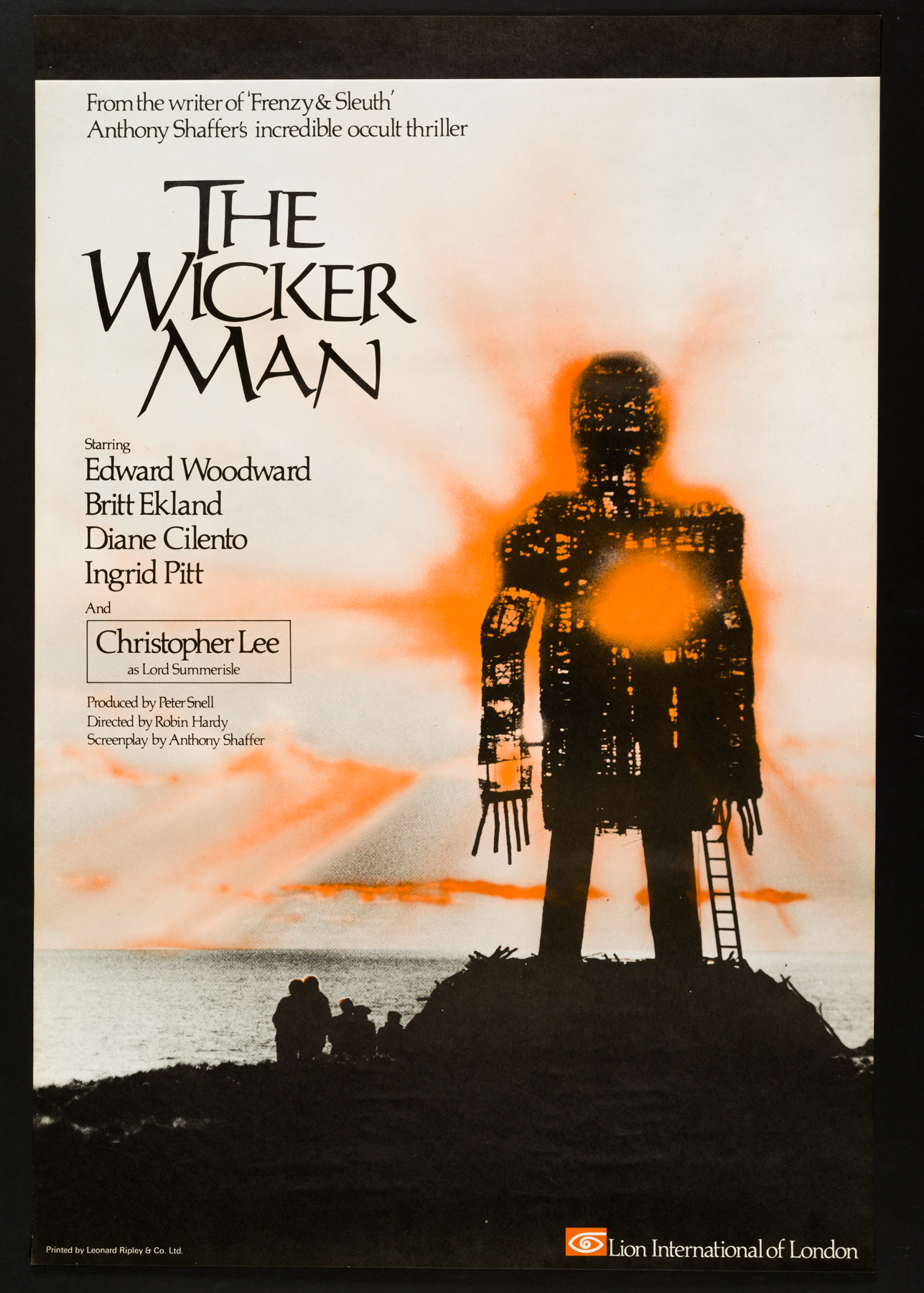
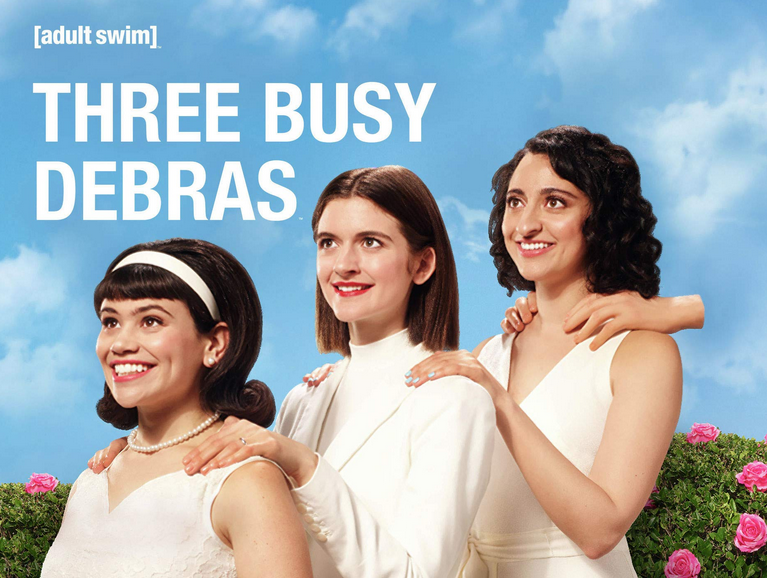
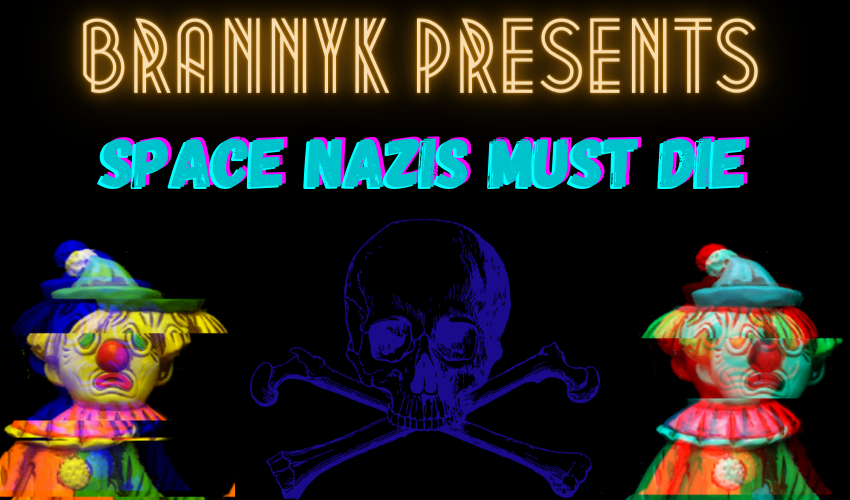
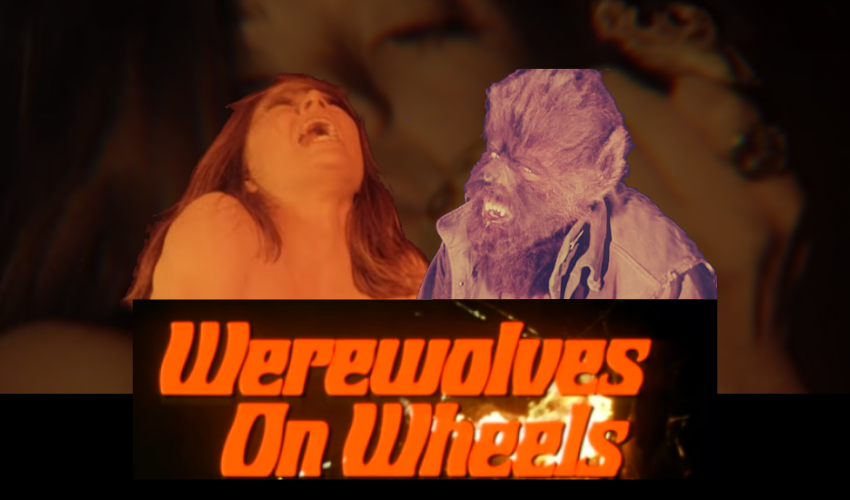




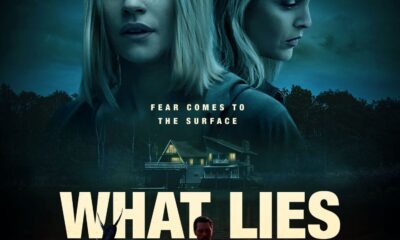



John Combo
February 29, 2020 at 12:54 pm
Even the trailer is awesome! They actually put this in line with The Road Warrior and The Terminator! I’m not even sure if they weren’t trying to be serious! Awesome review!
Patricia Dartt
March 1, 2020 at 2:56 pm
Awesome review. Actual thought on the movie not just glossed over fun or not fun. Not just talk about the visual aspects or acting. I like that you really researched here. You also mentioned the typical acting and cinematography and fun factors anyone would expect. Good job.
Pingback: When Films Go Too Far I Can Help - Haunted MTL